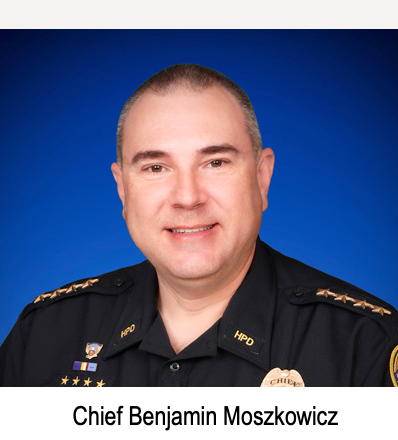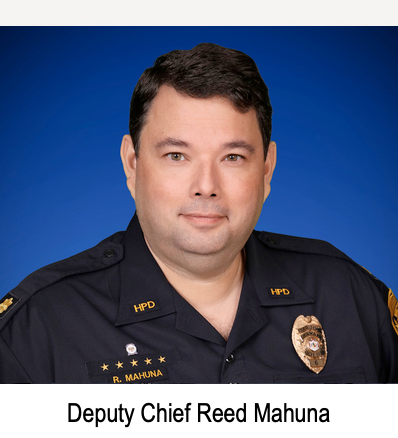The police department’s emergency 911 number is text telephone accessible. The department’s non-emergency number, (808) 935-3311, is also text telephone accessible, although it is recommended that deaf and hearing impaired persons use the 911 number for non-emergency as well as emergency calls.
The 911 number should be used for emergencies only so that emergency personnel can be dispatched as quickly as possible. Below are some guidelines for using the 911 emergency line.
- Do not program 911 into your auto-dial telephone. You won’t forget the number and programming the number invites accidental dialing of the number. Also, please do not dial 911 to “test” your phone or the system. This needlessly burdens the dispatchers and system with non-emergency calls.
- Since most areas of the Big Island are subject to natural disasters (such as earthquakes, flooding, eruptions, etc.), pre-plan a method of communicating with family, friends and relatives before an incident occurs. Choose any emergency contact outside the area that will be affected by the disaster. Make them the relay point for those who want to contact you. After the disaster hits, you can make just one telephone call to your contact and have that information relayed to all those you care about.
- Dial 911 only for an emergency. An emergency is any serious medical problem (chest pain, seizure, bleeding), any type of fire (business, car, building), or any life-threatening situation (fights, person with weapons, etc.). Use 911 to report crimes in progress, whether or not a life is threatened.
- Do not dial 911 for a non-emergency. Instead, dial the Hawai’i Police Department’s non-emergency telephone number: (808) 935-3311. For the Fire Department, call (808) 961-8336. A non-emergency incident is a property damage accident, a break-in to a vehicle (when suspect is gone), theft of property (when suspect is gone), vandalism (when suspect is gone), panhandlers, intoxicated persons who are not disorderly or cars blocking the street or alleys.
- Do not pick up the telephone and put it down if you don’t hear a dial tone — you’ll tie up the telephone network and delay obtaining a line. Stay on the line until you hear the dial tone. If you hear a fast busy signal, all circuits are busy — try again later. If you reach a recording, the telephone system isn’t available for your call — try again later.
- A police dispatcher answers 911 calls. However, if all call-takers are busy on other calls, the 911 call is answered by a call distributor that holds the call and then automatically routes it to the first available call-taker. If you reach a recording, do not hang up and try to call back. Stay on the line and your call will be answered in the order it was received. If you hang up, your call will be delayed because you will be placed at the end of other callers.
- Your 911 call will be routed to the police or fire department. In general, 911 calls are answered at the police Central Dispatch, which either handles the call or transfers it to the fire department.
- If you dialed 911 in error, do not hang up the telephone. Instead, stay on the line and explain to the dispatcher that you dialed by mistake and that you do not have an emergency. If you hang up, a dispatcher will call back to confirm that there is no emergency. If you don’t answer, a police officer must be dispatched to confirm that you are okay. This will needlessly take resources away from genuine emergencies.
- Briefly describe the type of incident you are reporting. For example, “I’m reporting a car fire,” or “I’m reporting an unconscious person,” or “I’m reporting a shoplifter.” Then stay on the line with the dispatcher — do not hang up until the dispatcher tells you to. In some cases, the dispatcher will keep you on the line while the emergency units are responding to ask additional questions or to obtain ongoing information.
- If you are reporting a fire or medical emergency, the police call-taker will transfer your call — stay on the line while the call is transferred. The call-taker that answers will need information about the incident.
- Let the call-taker ask you questions — they have been trained to ask questions that will help prioritize the incident, locate it and speed an appropriate response. Your answers should be brief and responsive. Remain calm and speak clearly. If you are not in a position to give full answers to the call-taker (such as if the suspect is nearby), stay on the phone and the dispatcher will ask you questions that can be answered “yes” or “no.”
- Be prepared to describe your location and the location of the emergency. Although an Enhanced 911 system will display your telephone number and location, the dispatcher must confirm the displayed address or may ask you for more specific location or information about the victim or suspects. If you are calling from a cellular phone, your telephone number and location will not be displayed for the dispatcher’s reference. You must be able to describe your location so emergency units can respond. Be aware of your current city or town, address, highway and direction, nearby cross streets, or other geographic points of reference. Cellular 911 calls are frequently routed to a central PSAP that could be many miles from your location. Be prepared to give the dispatcher your complete location — district, city or town, address or location, inside or outside, what floor or room, etc.
- Be prepared to describe the persons involved in any incident. This includes their race, sex, age, height and weight, color of hair, description of clothing and presence of a hat, glasses or facial hair.
- Be prepared to describe any vehicles involved in the incident. This includes the color, year, make, model and type of vehicle (sedan, pickup, sport utility, van, tanker truck, flatbed, etc.). If the vehicle is parked the dispatcher will need to know the direction it’s facing. If the vehicle is moving or has left, the dispatcher will need to know the last direction.
- Be patient as the dispatcher asks you questions. While you are answering the dispatcher’s questions, he or she is entering or writing down the information. If you are reporting an emergency, most likely a response is being made while you are still on the line with the dispatcher.
- Listen to the dispatcher’s instructions for assistance if you are in danger yourself.
- Don’t hang up until the call-taker tells you to. Follow any instructions the dispatcher gives you, such as meeting the officers at the door, or flagging down the firefighters at the curb.
- If you are able and have training, apply first aid to any patients who need it. Give the victim reassurance that help is on the way. Secure any dogs or other pets that may interfere with the emergency response. Gather any medications the patient is taking and which the medical crew will need to take with the patient.







